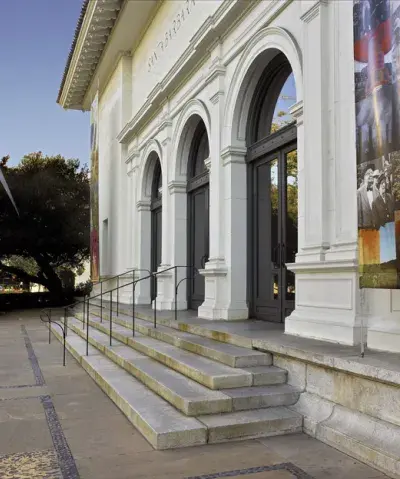OPEN TODAY
11 am – 5 pm
New Opportunities
Apply for a job at SBMA
SBMA Receives Charity Navigator's 4-Star Rating
Press Release
In Conversation with Artist Elliott Hundley
Sunday, April 20
12 – 1:30 pm
12 – 1:30 pm
Sea of Ice: Echoes of the European Romantic Era
February 2 – August 24, 2025
Dario Robleto: The Signal
December 8, 2024 – May 25, 2025
School Field Trips
Register your class today
Art Learning Lab
Opening April 13
Education Viewbook
Learn about all the Education programs at SBMA
Become a Member!
Enjoy Member Benefits Today!
For Members
See what's in store if you become a Member of SBMA!
Become a Docent
Help Teach at SBMA
Allure of the Amalfi Coast
Discovering Italy’s Coastal Beauty, A Value Tour
October 29 – November 6, 2025
Cruising the Adriatic
~ Slovenia & Croatia aboard Queen Eleganza with Eric Frank
May 23 – June 3, 2026
Art, Arboreta, and Estates of England's East Anglia Region
~ Cambridge and Norfolk ~ with Oliver Gerrish
June 2026 (Dates TBD)
Museum Store
Jewelry, Books, Toys, and Custom Products
Visit SBMA
Click for more info














![memberseve[1]](https://www.sbma.net/sites/default/files/styles/menu_thumbnail_400_480/public/menu/memberseve%5B1%5D.jpg.webp?itok=hIz01lpc)





